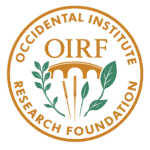Immune System
Immunosenescence, Infection
Risks and Antibiotic Resistance
What can secondary plant ingredients
from Black Elderberry achieve?
The efficiency of our body’s own defense system plays a prominent role when it comes to fighting off bacterial and viral caused infections. Phytobiotics, which on the one hand have an anti-infective effect and on the other hand strengthen the immune system, are advantageous in daily practice application and contribute to the avoidance of antibiotics, whose resistance has increased dramatically in recent decades.
Risk factors for the stress and
overload of our immune system
- Age
- Chronic diseases
- Medication
- Micronutrient / nutrient deficiencies
- Noxa (alcohol, smoking)
- Psychological stress
- Insomnia
- Strong temperature stimuli
- Radiation (UV, X-ray)
- Stress
- Environmental toxins
The use of well-tolerated, plant-based anti-infectives is particularly recommended in older age, because the immune system (like all organs) is subject to senescence and increasingly loses its effectiveness – which can be accompanied not only with increased risk of infections, but among other things also with increased risk of tumors.
In this context, secondary plant ingredients, which have a defense-strengthening as well as an anti-inflammatory and germ-inhibiting effect (as shown in the example above of black elderberry), are of particular importance in naturopathy.
Overload of the Immune System, Immunosenescence and Immunoinflammation
Our immune system consists of a highly complex and very efficiently working network of various tissues, cells and cell products, whose main physiological task consists of recognizing and eliminating foreign, “non-endogenous” material. A number of influencing variables can affect the body’s own defences and severely disrupt its homeostasis (see text box above).
Thus, for example, negative stress (“distress”) results in the body being flooded with stress hormones. The increased release of stress hormones such as cortisol causes immunosuppression, which is associated with an increased risk of infection and can finally adversely affect the body’s own tumor surveillance. It is therefore not uncommon for a cold or flu-like infection to set in immediately after situations that are associated with increased pressure to achieve (e.g. exams) and stress. Certain medications (e.g. antibiotics, chemotherapy drugs) are also associated with a reduction in the immune system.
And finally, our immune system is affected every day by environmental toxins and other noxa. Environmental chemicals (e.g. bisphenols, heavy metals or polycyclic, aromatic hydrocarbons) are associated with immunodeficiencies and immune regulation disorders, which in turn can have far-reaching consequences for health (e.g. allergies, fertility disorders, inflammation). According to the American Chemical Society, the number of measurable contaminants has multiplied in recent decades. For example, the “Pesticide Atlas 2022”, presented by the Pesticide Action Network (PAN Germany), makes it clear that the use of herbicides and insecticides has increased by around 80 percent since the 1990s.
Furthermore, in the course of aging, immune competence generally decreases at all levels. The epithelial function (skin, mucous membranes) – as the first protective barrier in the fight against pathogens – shows a decreasing tendency. The second protective barrier – the innate immune system (among others phagocytosis, complement system) – is also becoming increasingly lax. And finally, the adaptive (specific) immune system (B-cell, T-cell activities) is also affected by efficiency losses. At the same time, the generation of proinflammatory mediators in the B- and T- cells also increases. The “inflammaging” caused by it – together with immunosenescence – favors an increase in the risk of developing age-related diseases such as tumor diseases, diabetes mellitus as well as inflammatory joint and lung diseases. It is assumed that these processes also play a role in the development of frailty in old age.
“Scientific data show that, for example, more than 90 percent of the resistant germs found in cattle and pigs no longer respond to at least five antibiotics.”
Antibiotic Resistance Is On The Rise
For years, health and research institutions have referred to the time disparity between the speed with which various pathogens are meanwhile developing resistance and the development time required for research into new effective antibiotic drugs. For decades, effective antibiotic drugs have frequently been used too frivolously and not appropriately for their application. The resulting selection pressure on the pathogens forces the bacteria to make mutations in their genetic material, which enable them to survive such a drug ingredient unscathed. Besides, they can also exchange the acquired genetic abilities with each other, which can especially aggravate the problem of the spread of resistance. The widespread use of antibiotics in animal breeding is also considered problematic. In this way, both the active ingredients and antibiotic resistant bacteria can enter the human body. Through animal (and human) excrement, the substances also enter the natural cycle via wastewater, whereby new resistances can develop in water bodies and soils.
Although the use of antibiotics as growth promoters in veterinary medicine has been prohibited since 2006, the area of application in the case of infectious diseases remains unchanged, which in practice justifies its use in all animals in the event of an imminent disease of the entire herd. Scientific data show that, for example, more than 90 percent of the resistant germs found in cattle and pigs no longer respond to at least five antibiotics. The ingestion of resistant bacteria through food (e.g. meat, sausages, dairy products) is particularly critical. Here, special attention is given to zoonotic pathogens – thus germs that are transmitted from animals to humans, such as Salmonella. Ultimately, especially in older or immunocompromised people, these can be fatal if antibiosis is not successful, and can also cause further infections in the environment. Within the framework of scientific studies it was shown that farmers and veterinarians, who professionally have more contact with animals, are more likely to carry multidrug-resistant germs than the rest of the population.
Particularly problematic is the fact that already 40 percent of the reserve antibiotics that should be used for severe infections or even in the absence of effective conventional antibiotics are ineffective due to resistance. And finally, deficits in the development of new antibiotics also contribute to the exacerbation of the resistance problem. Expert committees fear that by 2050, around ten million people worldwide will die from infections as a result of a lack of antibiotic efficacy. The World Health Organization (WHO) warns of a post-antibiotic era that could take us back to the time before the first drug developments. In the meantime, stopping the development of antibiotic resistance has become a national concern. The United Nations, in cooperation with the WHO and the World Organisation for Animal Health (0IE), has developed strategies to contain the development.
“Sambucus nigra influences inflammatory-relevant signal transduction and inhibits the release of pro-inflammatory cytokines and mediators such as IL-1a, IL-1b and TNF-alpha.”
Black Elderberry: Strengthens the Immune System and Inhibits Infection
Plant-based anti-infectives are becoming increasingly important in view of the increasing antibiotic resistance worldwide. The most common scientific information and clinical studies are available on the largest group of secondary plant ingredients – polyphenols – which are mainly found in berries.
Particularly rich in these interesting secondary plant substances are the berries of the black elderberry – Sambucus nigra L. These have an extremely high proportion of anthocyanins (especially cyanidin-3-0-glucoside, cyanidin-3-0-sambubioside, 5-0-glucoside and cyanidin-
3,5-0-diglucoside) – a subgroup of polyphenols that are also responsible for the intense coloration of the fruits. Furthermore, other polyphenols such as phenolic acids and various flavonoids as well as interesting immunomodulatory polysaccharides (especially arabinogalactans) are also contained in the berries.
It is this spectrum of ingredients that is responsible for the health-promoting effects of the medicinal plant, which was already noted and mentioned by Hippocrates. The black elderberry berries and the extracts made from them are considered among other things as antioxidant, anti-infective, anti-inflammatory, chemo- and vascular prevention as well as digestive. Additionally, elderberries are also a good source of vitamin C, B vitamins (especially folic acid) as well as minerals such as potassium.
In addition to a number of in vitro studies, there are also various human studies that suggest an efficient immunomodulatory, anti-inflammatory and anti-infective effect. In vitro studies have impressively shown that elderberry extract inhibits the growth of several flu virus strains.
Similarly, in a (in vitro) work with monocytes, there were clear indications that Sambucus nigra influences inflammatory-relevant signal transduction and inhibits the release of effective pro-inflammatory cytokines and mediators such as IL-1a, IL-1b and TNF-alpha.
A special variant of elderberry – the European black elderberry (Sambucus nigra, variety “Haschberg”) – has been particularly well studied. A number of older clinical studies (1994-2004) have shown that the use of elderberry extract can significantly improve the progression of infectious diseases. For example, within the scope of a placebo-controlled study with people suffering from the flu epidemic in Panama, it was shown that the duration of the illness could be shortened (from an average of 8 to about 4 days) and that the symptoms of the flu-like infection (among other things fever, cough, nasal congestion) could be significantly reduced.
Also interesting is the result of a more recent human study from 2014, which was carried out with air travelers. It is well known that the risk of colds is increased on long-haul flights, and in these cases about one in five passengers complains of corresponding symptoms after arrival. A total of more than 300 passengers took part in this study, who had to complete a flight of at least seven hours. Every day ten days before and seven days after the flight, they received a standardised elderberry extract in capsule form (ElderCraft®, contained in the product rubyni®). In the verum group, there was a significantly lower burden of cold symptoms. Both the severity and the duration of the disease were reduced by more than 50 percent compared to placebo.
Black Elderberry: Mechanisms of Action and Extract Quality
The immunomodulatory effects of Sambucus nigra extract are based on various mechanisms of action. On the one hand, studies (in vitro) have shown that the secondary plant ingredients of elderberry block viral hemagglutination and thus counteract the attachment of influenza viruses to human blood cells. On the other hand, it could be shown that the anthocyanin cyanidin-3-sambubioside forms a bond with viral neuraminidases and thus inhibits virus replication. Finally, both the polyphenols as well as the special polysaccharides (arabinogalactans) in black berries can be responsible for the stimulation of macrophages – and the complement activity for the immune-stimulating effect.
When selecting suitable extract qualities, it is essential to pay attention to the extraction and quality. Even the choice of the extraction agent has an influence on the ingredients and effect of such an extract. Alcoholic extracts do not or hardly capture water-soluble ingredients and they also contain the risk of contamination with the solvent. Aqueous extracts which are obtained by gentle processes, enable the preservation of the original fruit matrix and here – in the case of black elderberry – not only the extraction of sufficient concentrations of polyphenols, but above all of the immunomodulatory effective polysaccharides. At the same time, however, the type of extraction or enrichment method also plays an important role. In the case of the above-mentioned preparation, a special (proprietary) gentle membrane technology (ultrafiltration) is used here. Whole elderberries are first pressed into juice, which is combined with the water extraction of the pomace and then afterwards undergoes a special ultrafiltration. In the course of this purely physical process, low-molecular substances (e.g. salt, simple sugars) are separated out via various membrane filters, and the high-molecular polysaccharides and secondary plant ingredients are retained and enriched. Furthermore, extract production from organic fruits is recommended.
Result
Plant based anti-infectives – like for example the high-quality extracts extracted from black elderberries – can make a valuable contribution to combating antibiotic resistance. Due to their astringent properties, they support the risk of infection on the one hand and the body’s own network of the immune system on the other. However, the quality of the extract is decisive for the effect.
Keywords: Antibiotic resistance, immunosenescence, immune system, phytobiotics, black elderberry, secondary plant ingredients

An Exclusive Translated Article for P2P Supporters
From the Monthly Publications of P2P
Published March 2024
From an article in CO’Med, Volume 30, January 2024
Machine Translation by Lernout & Hauspie, & Promt
Translation & redaction by: Carolyn L. Winsor, P2P Consulting
© Copyright 2024, Prof. Dr. M. Döll, Wachenheim an der Weinstraße, Germany
Literature
- Antonelli M et al. Phytotherapic compounds against coronaviruses: Possible streams for future research. Phytother Res 2020;34(7): 1469-1470.
- Cheema HA et al. Ouercetin for the treatment of COVID-19 patients: A systematic review and meta-analysis. Rev Med Virol 2023:33(2): 92427.
- Crupi P. Anthocyanins: The Infinite Properties of These Incredible Compounds. Molecules 2023; 28(4): 1812.
- Hawkins J et al. Black elderberry (Sambucus nigra) supplementation effectively treats upper respiratory symptoms. A meta-analysis of randomized, controlled clinical trials. Complement Ther Med 2019; 42: 361-365.
- Maselli A et al. Use of Nutraceuticals in Elderly to Fight Inflammation and Immuno-Senescence: A Randomized Case-Control Study. Nutrients 2022; 14(17): 3476.
- Mocanu ML. Elderberries-A Source of Bioactive Compounds with Antiviral Action. Plants (Basel) 2022:11(6): 740.
- Ozgen M et al. Total phenolic, anthocyanin contents and antioxidant capacity of selected elderberry (Sambucus canadensis L.) accessions. Pharmacogn Mag 2010; 6(23): 198-203.
- Tiralongo E et al. Elderberry Supplementation reduces cold duration and symptoms in air-travellers. A randomized, double-blind placebo-controlled clinical trial. Nutrients 2016: 8(4): 182.
- Wieland LS et at Elderberry for prevention and treatment of viral respiratory illnesses: a systematic review BMC Complement Med Ther 2021; 21(1):112.
- Zakay-Rones Z et al. Randomized study of the efficacy and safety of oral elderberry extract in the treatment of influenza A and B virus infections. J Int Med Res 2004; 32(2): 132-140.
- Zakay-Rones Z et Inhibition of several strains of influenza virus in vitro and reduction of symptoms by an elderberry extract (Sambucus nigra L.) during an outbreak of influenza B Panama. J Altern Complement Med 1995; 1(4):361-369.
- Zhang P et Anthocyanins in Plant Food: Current Status, Genetic Modification and Future Perspectives. Molecules 2023:28(2): 866



